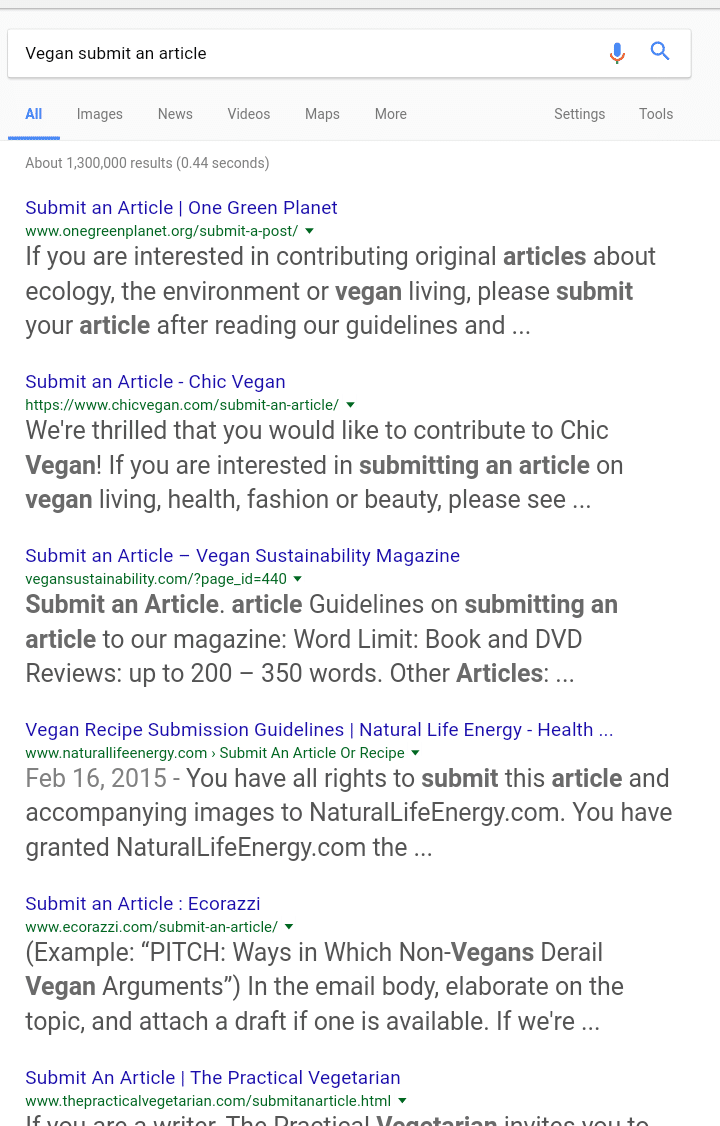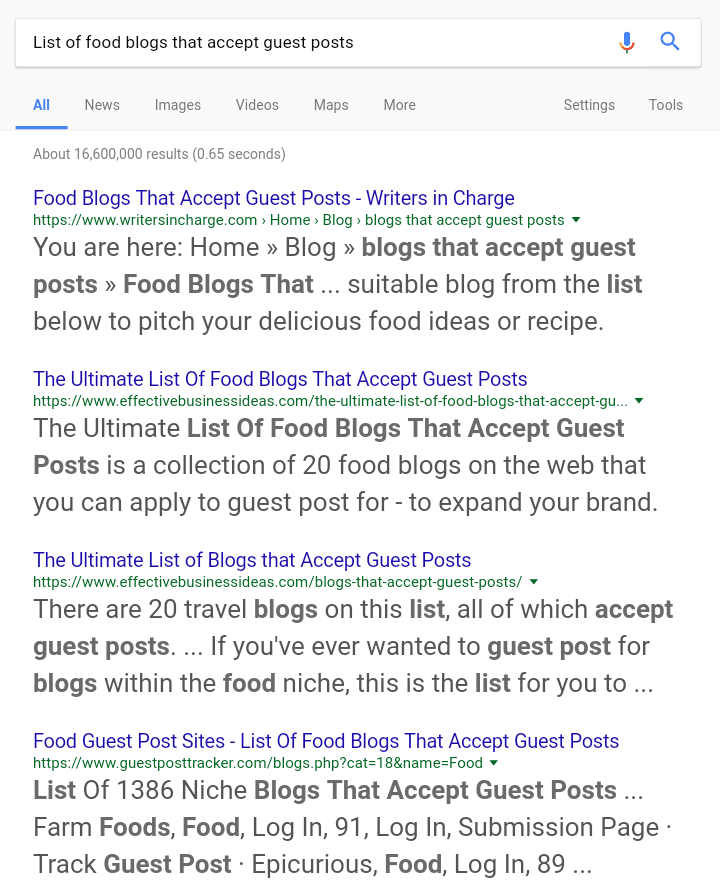There are lots of arguments in the SEO industry. Some SEOs believe there are 200+ factors Google uses to rank pages, and some don’t.
The one thing most SEOs seem to agree on is that backlinks would continue to impact rankings now and in the future.
And that’s the problem. Getting those links have become harder than ever.
Webmasters have gotten tired of receiving the usual scripted link requests. But you still need links pointing to your site.
Here are two link building tactics that still work.
1. Guest Posting
Wait. I don’t mean spammy reciprocal linking. That’d invite Google’s hammer on your site.
This tactic involves targeting high authority sites to provide valuable content with a link to your site.
And there are five steps involved.
STEP 1: Find Guest Post Targets
You can’t write a guest post for every site on the web. You need to find niche related sites.
Here are some ways to find those sites:
A. Google Search Strings
You can find niche sites that accept guest posts by playing with a few Google search strings.
Look at these combinations:
- #1 Your Keyword “guest author
- #2 Your Keyword “contributor guidelines”
- #3 Your Keyword “submit an article”
So if you run a vegan niche blog, “Vegan” would replace “Your Keyword” in those combinations.
And you should see results like this:

B. Pre-Made Target Lists
Other bloggers may have already compiled targets for you.
Use this search string:
- #List of “Your Keyword” that accept guest posts
STEP 2: Filter
Get those sites you found in Step 1 on a spreadsheet and get ready to delete some names.
You shouldn’t write for every site in that list. Some are just not worth it.
Here are some things to consider:
The site…
- Must be related to yours
- Should have a good following on social media
- Must allow guest bloggers to include contextual links to their own sites
- Has to be be a high authority site
You can check and compare the authority of sites using tools like Moz’s Open Site Explorer.
STEP 3: Get To Know Your Targets
At this stage, you should be left with a thin list of link opportunities you’d like to chase.
So it’s time they know who you are. Some SEOs jump this step and are shocked at the poor rates at which their pitches convert.
Let’s face it. Who would you rather share your room with? A total stranger, or a friend?
It’s the same thing with landing that post.
Your target just posted a great guide? Send an email telling them how helpful that post was to you.
Or just say hello on twitter.
STEP 4: Find A Killer Idea
Something intriguing that’s never been discussed on that blog or a fresh perspective to a previous post.
Some sites have guest posting guidelines that explain all that they’d love to see in a guest post. Read it before deciding on your topic.
STEP 5: Pitch & Deliver
Okay, you’re friends with the blogger or editor at this point.
Pitch him/her your killer idea and wait for a response. And there’s nothing like a universal template.
Check the guidelines again for any help with pitching or ask previous guest bloggers on the site.
You should normally follow-up by the end of the week before giving up and moving to the next target.
If your idea’s been accepted, give it your best.
If you do well enough, you’d get direct requests from other bloggers to post on theirs also.
2. Beginner and Ultimate Guides
This one would make you sweat a bit, but it’d earn you links even months after the post is live. These are those 5,000-word guides on industry hot topics.
One example is this guide by MOZ, the beginner’s guide to SEO. It’s been read over 3 million times, and it’s very clear why.
There are many marketing blogs on the net but most marketers don’t have the time to explain to every newbie what a backlink means and all that stuff.
So they’d simply link to that post, and that’s why it’s earned over 9,000 links.

Source: SEM Rush
You can do the same thing, but get ready to create something massive.
And there are three steps involved.
STEP 1: Find Those Hot Topics
There were other guides before the guys at MOZ did that post. Those guides were just not beginner-friendly.
So look for those hot topics with outdated beginner guides.
Facebook frequently changes its algorithm, so you can see why an updated Facebook ads beginner’s guide reflecting changes made in 2017 would do better than one last updated in 2015.

You can do the same thing.
Use this search string:
#1 Beginner’s guide to “Your Keyword”
You’d get lots of ideas so you should only target posts that:
- Need updating
- Generated lots of links
You can see the link score with the MozBar extension.
STEP 2: Do Something
Make it 10× better. If you need freelance writers and designers to get it done, do that.
Neil Patel got 8,451 email opt-ins after publishing a 40,000-word ultimate guide.
STEP 3: Outreach
This kind of content would naturally earn you links after some time. But only after you’ve done basic blogger outreach.
And here are two techniques that do well with outreach.
#1 Link Roundups
Some bloggers gather the best content on particular niches daily, weekly, monthly and even yearly.
You should get on pages from high authority bloggers.
Use this search string:
“Your Keyword” roundups
See this example:

Of course, after you’re done with filtering, you should send a personalized mail to these bloggers with a link to your post.
The rejection rate is lower ’cause these bloggers are actively looking for links to include in their roundups, so you’re actually saving their time if you have something good.
#2 Resource Pages
Some websites have specific pages that aggregate top content on specific topics.
So they’re happy to give you a link if you have a post that’s worth it.
Here are some search combinations you can use:
“Your keyword” resources
“Your keyword” inurl:resources
Just like this…

You’d be sending lots of emails, so you’d need tools like hunter and the rest.
Link building isn’t dead, just stick with what’s working.






